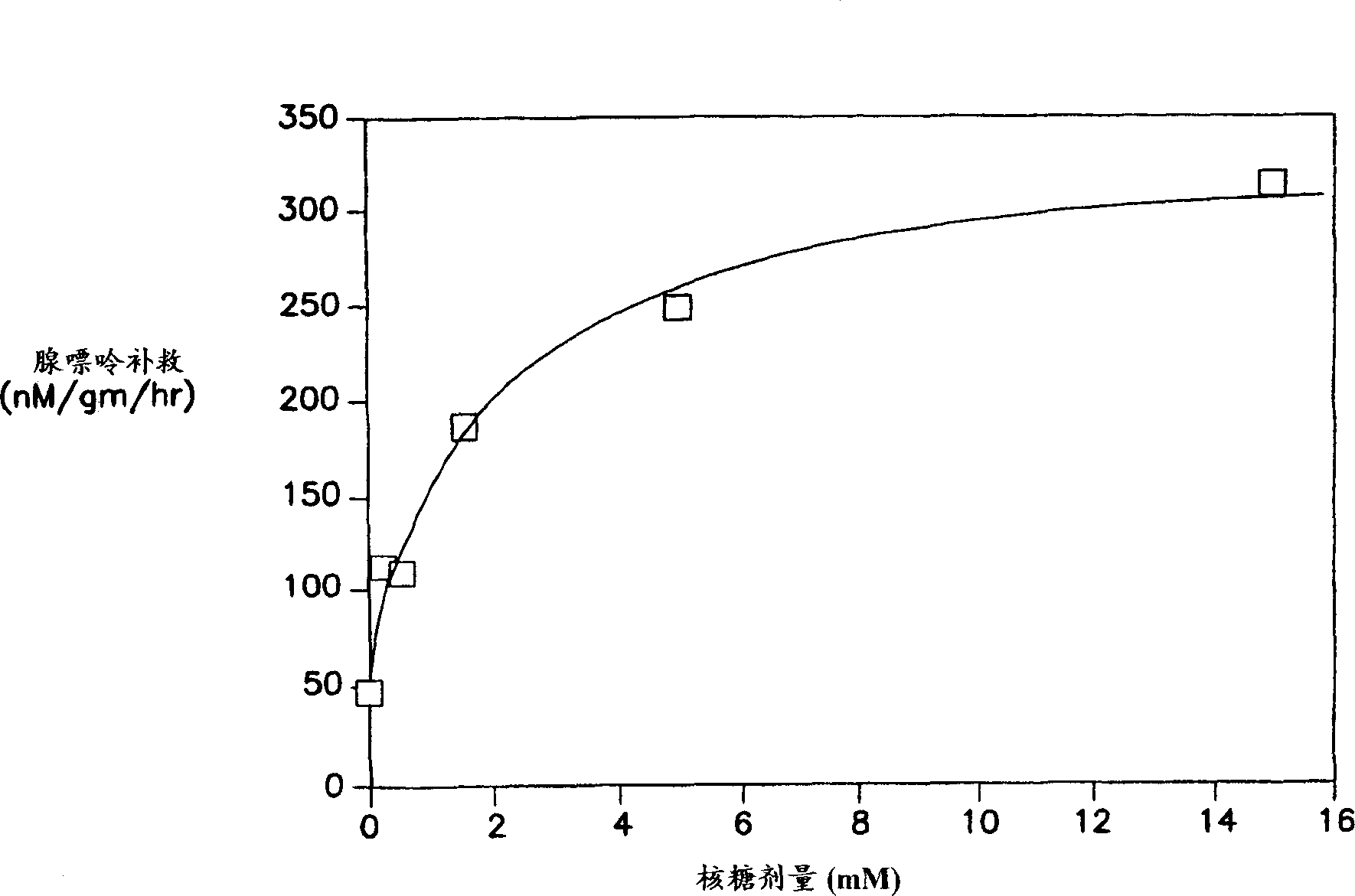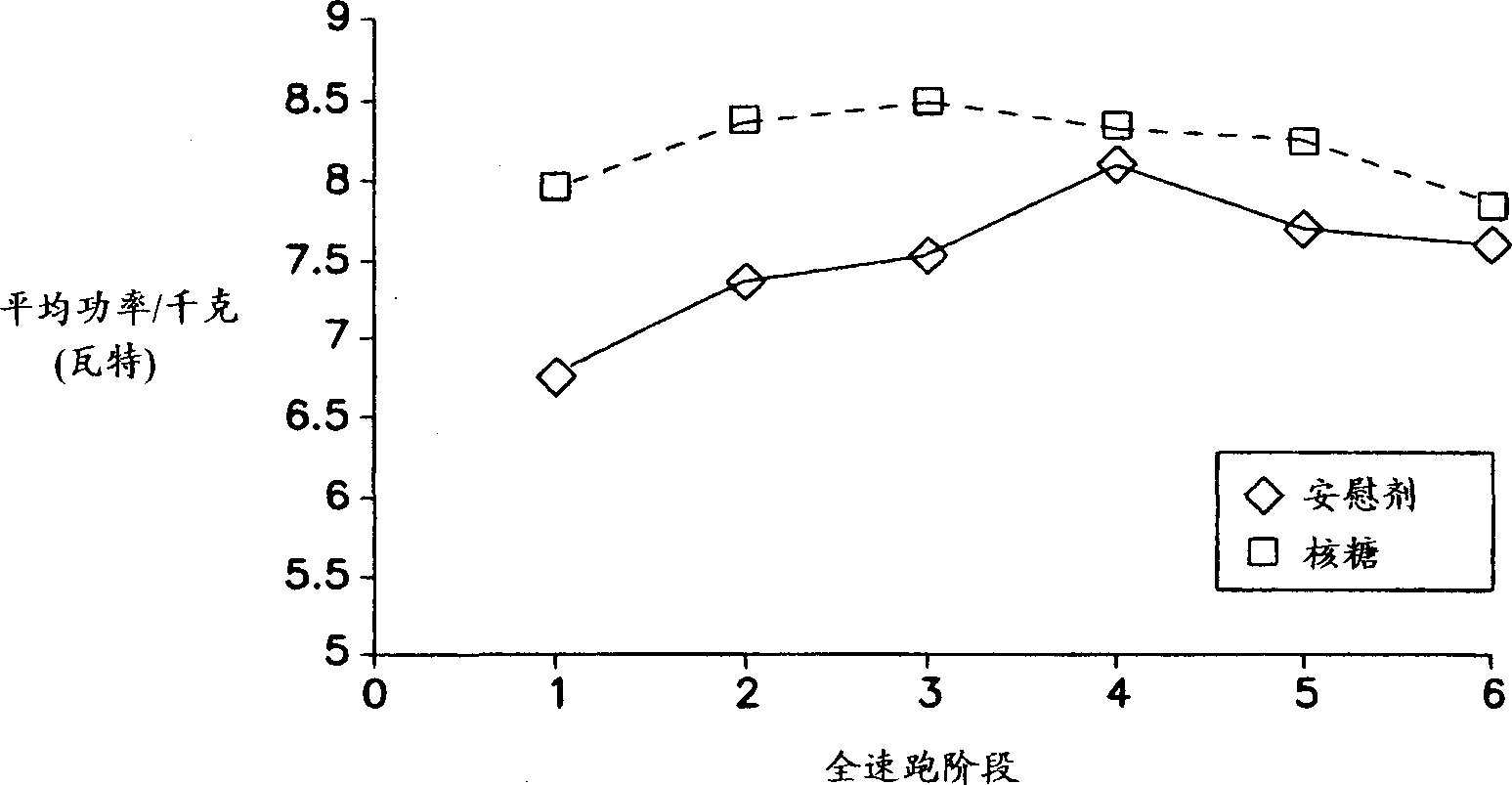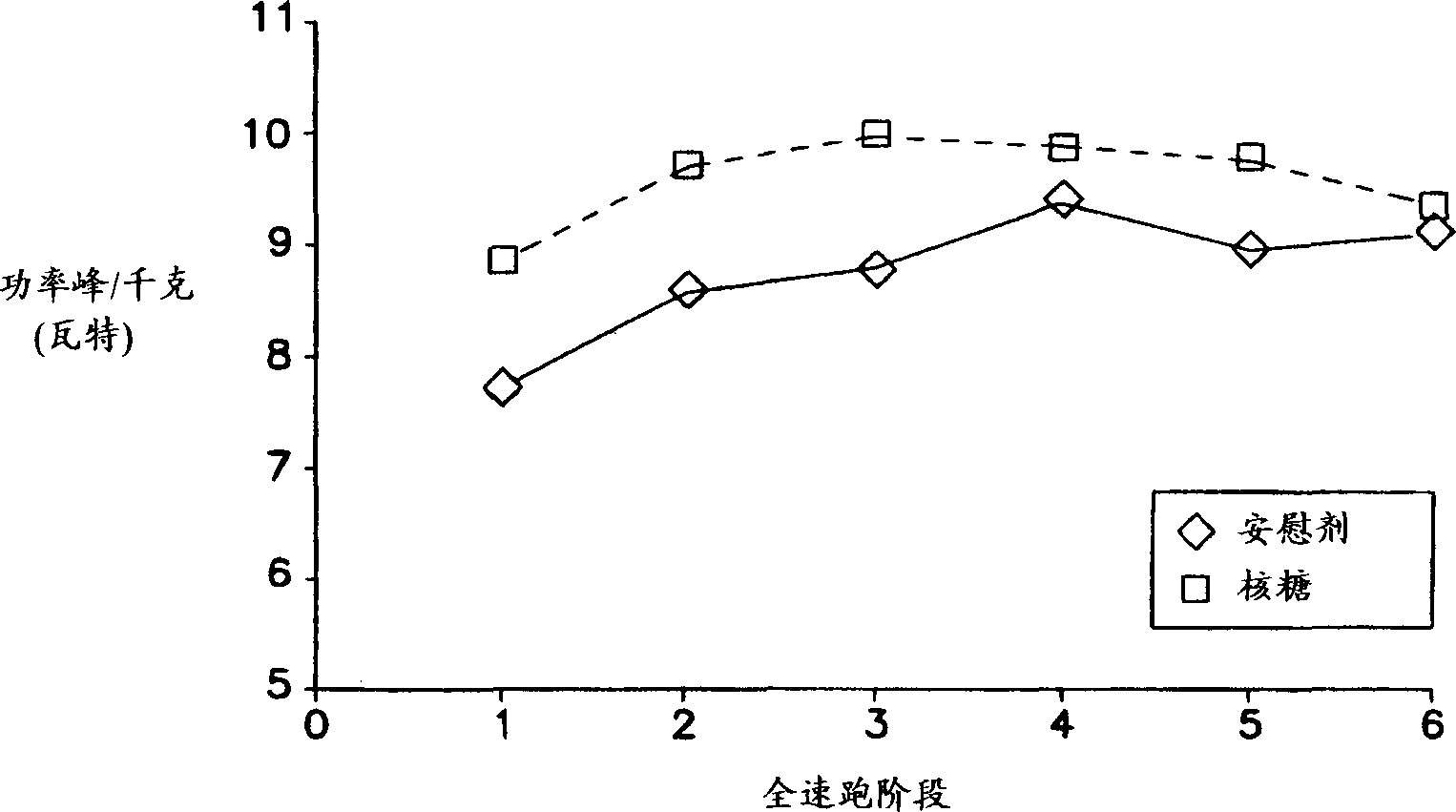Compsns. for increasing energy i(in vivo)
A composition and energy level technology, applied in the directions of drug combination, carbohydrate active ingredients, medical preparations containing active ingredients, etc., can solve the problem of inability to eliminate the de novo synthesis of contractile muscles and other problems
- Summary
- Abstract
- Description
- Claims
- Application Information
AI Technical Summary
Problems solved by technology
Method used
Image
Examples
Embodiment 1
[0038] Example 1 Effect of D-ribose on Nucleotide Salvage in Resting Rat Muscle
[0039] It has been shown theoretically, but not objectively, that ribose synthesis via PRPP increases the rate of ATP synthesis via the nucleotide salvage pathway. However, nothing is known about total adenine nucleotide (TAN) or ribose levels in resting muscle. It is therefore possible that this synthetase pathway has been saturated and ribose administration fails to increase ATP levels in normal, non-ischemic skeletal muscle. To demonstrate the effect of ribose on this pathway, healthy adult male Sprague-Dawley rat plantar complex muscles were surgically exposed and perfused with reconstituted blood infusion medium containing amino acids, mM glucose, and 100 μU bovine insulin / ml. Muscles are perfused with reconstituted blood medium at approximately 40 ml / min, providing tissue perfusion of approximately 0.65 ml / min. Different concentrations of D-ribose were added to the perfusate to achieve a ...
Embodiment 4
[0060] Administration of D-ribose immediately before and during activity enhanced the beneficial effects in those subjects who did not exercise. As described in Example 2 above, the full-speed running output power of 4 healthy, normal male volunteers in the discharge cycle was tested. Each experimenter served as its own control. Between bouts of full-speed running, the subject should perform slow and continuous loops. The total test time was 1 hour with 4 full speed running bouts during the test. After the initial baseline measurement and after each full-speed running bout, the subject is administered 5 g of D-ribose or a similarly flavored placebo (glucose) in 200 ml. Full speed running power output was measured 15 minutes after ingestion of the test solution. Each subject underwent two periods, one of ribose and one of placebo, in random order, with one week in between. The placebo was sweetened with dextrose so as to be indistinguishable from the ribose solution. The s...
Embodiment 5
[0062] As the colic worsened, the patient could only walk less than 1 mile per day and had to take sublingual nitroglycerin when he got there. The patient was orally administered D-ribose dissolved in about 250 cc of water. The patient received intermittent doses of 5-10 g of D-ribose per day for 6 months. Following ribose administration, the patient was able to improve his daily exercise tolerance up to 2 miles without any supplemental oral nitrate administration. When ribose is interrupted, and its recurrence of exercise-induced angina prior to ribose administration occurs, supplemental oral nitroglycerin must be used. Reintroduction of oral ribose allowed the patient to walk 2 miles per day without developing angina or requiring nitroglycerin. His subjective evaluation of ribose treatment was "very weak angina, I feel better, have more energy and can do more activities without pain or medication (nitroglycerin)". Embodiment 5 is to the improvement of treadmill test behav...
PUM
 Login to View More
Login to View More Abstract
Description
Claims
Application Information
 Login to View More
Login to View More - R&D
- Intellectual Property
- Life Sciences
- Materials
- Tech Scout
- Unparalleled Data Quality
- Higher Quality Content
- 60% Fewer Hallucinations
Browse by: Latest US Patents, China's latest patents, Technical Efficacy Thesaurus, Application Domain, Technology Topic, Popular Technical Reports.
© 2025 PatSnap. All rights reserved.Legal|Privacy policy|Modern Slavery Act Transparency Statement|Sitemap|About US| Contact US: help@patsnap.com



